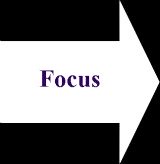Home Page | Blog | Managing | Marketing | Planning | Strategy | Sales | Service | Networking | Voice Marketing Inc.
Use a Business Plan Outline
Or Business Plan Layout
Why do you need a business plan outline? Because if you need small business startup money, or you want to focus and grow an existing business, you need a business plan. Use an outline, or business plan layout, or examples of business plans to help develop and build your own plan.
Search This Site

This is a comprehensive business plan outline.
Not all small business owners will want (or need) to do a plan as comprehensive and intensive as this one.
But it does help to understand the full range of plan components.
If you are about to startup a business, you will need to do a thorough plan to be able to access small business startup money from banks or financial institutions.
If you are adding new products or services, or looking at a business expansion (maybe through a merger or acquisition), or if you are looking to sell your business, having a comprehensive plan is important to succeeding with your goals.
Using a Business Plan Outline
What's the difference between a business plan outline or a business plan layout? An outline is a usually a full detailed list of the activities needed in the plan; whereas the layout is a higher level overview of what's in the plan.
Review some examples of business plans in your industry (often an industry association will have some sample business plans for review or check out the local community college) to see the type of information you need in your plan.
This business plan outline includes a number of strategic management elements that are not common in all plans but that are useful and necessary if you have a highly active and competitive market, complex products or services, and/or complex buyer behavior.
First, determine why you want to do a business plan:
- Is it to manage and operate your business better?
- Is it to manage fast growth better?
- Is it to manage in a declining market better?
- Is it to manage the impact of your competition better?
- Is it to introduce more products or services (or to consider doing so)? Or to add more locations?
- Is it to change ownership: adding new partners, adding key employees?
- Is it to obtain financing?
- Is it to sell your business?
Once you've answered these, or other, questions, then choose the elements from the business plan outline on this page (either comprehensive or simple business plan) that best fits your business.
There are many reasons to write a business plan and how you write your plan depends a lot on why you want to write it.
Here's what I recommend: do the key elements of the plan to start your business or if you haven't done a plan or updated a plan in a long time (key elements will be in italics in the business plan outline below). Then each year when you update your plan, add another element or two. Often the updates will not take as much time as originating the work or the research - and the numbers should be tracked by your system as your business operates.
However if your business is fairly complex, if you have a lot of products or services, if you have a highly active competition, if your life-cycle is in the introductory or the declining phases, do as much of this business plan outline as possible. Outsource some, or all, of the work if necessary: this means do what you can yourself (if you want to) and have a consultant or business plan writer do the sections that you can't do, or don't want to do.
Business Plan Outline:
- Executive Summary
- Business concept (if a new business) or Business focus (if a plan renewal or update)
- Current Business Environment
- Key Management and/or Ownership
- Key Success Factors
- Key Risk Factors
- Requirements for the plan: managing the business, significant change in the marketplace, selling the business, obtaining bank loans, obtaining grants, obtaining venture capital, going from a private to public enterprise, and more.
- Vision and Mission Statements
- Strategic Vision Statement - set the direction of where your business is going (future)
- Mission Statement - define your business, where it is today
- Company Analysis
- SWOT Analysis (internal strengths and weaknesses; external opportunities and threats): rank the weaknesses and threats in particular to decide which ones you need to focus on first.
- Market Analysis
- The Industry
- Market Environment
- Driving Forces in the Industry
- Market Segmentation
- Target Marketing: primary, secondary and tertiary
- Buyer Behavior: characteristics, needs, wants, decisions
- Post purchase buyer/customer behavior
- Conduct a market opportunity analysis which looks at unmet customer needs
- Competitive analysis
- Identifying your competition
- Competition: strengths and weaknesses
- Competition: strategies and objectives
- How does your competition react?
- Primary competitors and their impact
- Competitive Intelligence
- External Opportunities and Threats: impact on competition
- Strategy
- Competive Advantages: Defensive and Offensive Tactics
- Differentiation, Niche, Low-Cost, OR Leader Strategy and Why
- Identify How You Will Implement Your Strategy (What you will do)
- Products Or Services
- Products or Services List, including features, advantages, and benefits
- Service or Product Differentiation
- Service or Product Positioning
- Your Service or Product Life-Cycle
- Comparison to Competitive Products or Services
- New Services or New Product Development Plan (future)
- Marketing Plan
- Marketing Environment
- demographics
- psychographics
- economic
- technological
- political/legal
- Market Research
- Customer (or Buyer) Satisfaction and Retention
- Marketing Mix:
- Product
- Price and Pricing Strategy
- Promotion and Communication
- Sales tactics, contests, incentives
- Advertising and Media
- Publicity
- Trade shows, Events and Conventions
- Direct Marketing Campaigns, such as Postcard Marketing
- Relationship Marketing
- Personal Selling
- Place or Distribution: Location, Retail and/or Marketing Channels
- Marketing Environment
- Sales Plan
- Assumptions
- Notes or Comments
- 5 year plan by customer, by sales representative, by geographic market, by product line
- Business Operations Plan
- Organization (culture, management team)
- Products or Services List, including production standards, how to produce, and standard operating procedures (SOPs)
- Human Resources Plan, including key personnel list
- Capital Expenditures Plan
- Equipment and Asset List
- Customer Service Plan
- Facilities/Location, including future space needs
- Maintenance Plan
- Safety Plan
- Quality Plan
- Environmental Plan
- Management Informations System Plan, including back-up and security
- Financial Plan
- Assumptions
- Notes or Comments
- Pro Forma (projected) Balance Sheet
- Pro Form (projected) Income Statement
- Cash Flow Projections
- Financial Ratios
- Business Exit Strategy: yes, you need to plan your exit and your strategy for succession even as you build your business.
- Manage Your Business To Achieve Your Strategic Business Plan
- Business Plan Objectives
- Action Plan
- Measure for Success
- Adjust for Improvement Where Necessary
Write a Business Plan:
Use Examples of Business Plans
I am often asked how long does it take to write a business plan. The real answer is 'it depends': on how complex your business is, how easy it is to access industry information, how well you know your market, and much more.
But, because I am usually pressed to give a more specific answer, I will assume that the level of complexity is low, industry information is relatively easy to access, and you know your market well. Under those circumstances, to write a simple business plan, if you spend 8 hours a day writing and researching, it can take about 15 business days to do it.
To do a comprehensive business plan, if you spend 8 hours a day writing and researching, it will take you about 30 to 40 business days to do it. Yes, as you can see by this business plan outline, this is a big investment of time.
The Advantages of Outsourcing
Consider outsourcing and hire an outside consultant or business plan writer, it will likely take less time (for either types of plan) because consultants are experienced at writing plans and because they often have other resources (e.g. accountants) that they work with. But they cannot work on producing your plan unless you provide them with the information they need.
Please note, not all business plan writers or consultants will work exclusively for you on your plan so the actual elapsed time might be longer. But negotiate what you want and need up front.
P.S. I am also often asked how much it costs to write a business plan. But the answer to this comes from determining what needs to be done: is this a simple 10 page plan? Is it a basic plan (such as identified in italics in the business plan outline)? Are you wanting part of your plan done or all of it? Are you wanting a comprehensive, strategic plan? Are you wanting your plan edited or reviewed?
There are too many parameters to provide a price here but I can tell you that I have seen pricing range from $500 for an edit and review to over $40,000 for a comprehensive strategic plan that was developed to 'win' a large (multi-million dollar) venture capital investment.
If you need a small business plan writer to build, or help you build, your small business plan, contact us for a quote.
More-For-Small-Business Newsletter:
For more timely and regular monthly information on managing your
small business,
please subscribe here.
Additional Reading:
Return from Business Plan Outline to Small Business Plan.
Ensure your Business Financial Plan includes a provision for emergencies.
Your Business Exit Strategy needs to include management succession planning.
Or return to More For Small Business Home Page.
Subscribe to
More Business Resources E-zine
Implement Your Plan: for Results

Once you've built your plan, you need to implement it.
Developing your strategy (in the plan) is the first, necessary, step. You need to know the direction you want to go, and you need the strategy and the plan to help you get there.
But once you've built the plan, you must execute it.
There is no value in building a plan that just gathers dust.
When building your business plan, make sure that you include an action plan for the strategies, techniques and tactics.
The actions need to include who's responsible for doing what; measurements for success (such as deadlines and timelines, targets and goals, costs, etc.); and why you need to take the action (in some cases, one action needs to be accomplished before subsequent ones can be launched).
As you work through the plan, make sure that you build reporting periods into the implementation: you need to know what's going on and why something is working, or not.
Make sure to communicate progress, or lack of it, throughout the organization. And re-visit the plan when and where necessary.
This Site
Focus on Your Plan

Plan for the future: lots of business owners want to get, or keep, moving forward. Planning seems to be more of a passive activity.
However, to ensure that your business goes in the right direction and that it optimizes all its opportunities, and manages its challenges, it is important to plan.
Balance your activities against the plan: make sure that you are investing your time, and money, on the elements of your business that will help you succeed.
Measure what works, and what doesn't work, and keep your focus: use your business plan as a map to guide you in the direction you want to go.







